Weighting: simultaneously one of the most crucial and most neglected aspects of diving. Being correctly weighted is essential for safety, comfort and good trim. On top of this, the type of weight is critical for fine tuning your configuration. Weight belt, quick release, trim pocket, coated, uncoated; there are a panoply of options available. With the help of our product recommendations and buyer’s advice guide, you should be well on your way to selecting the best dive weight for you.
Best Scuba Diving Weights Reviewed
#1 – XS Scuba Lead Shot
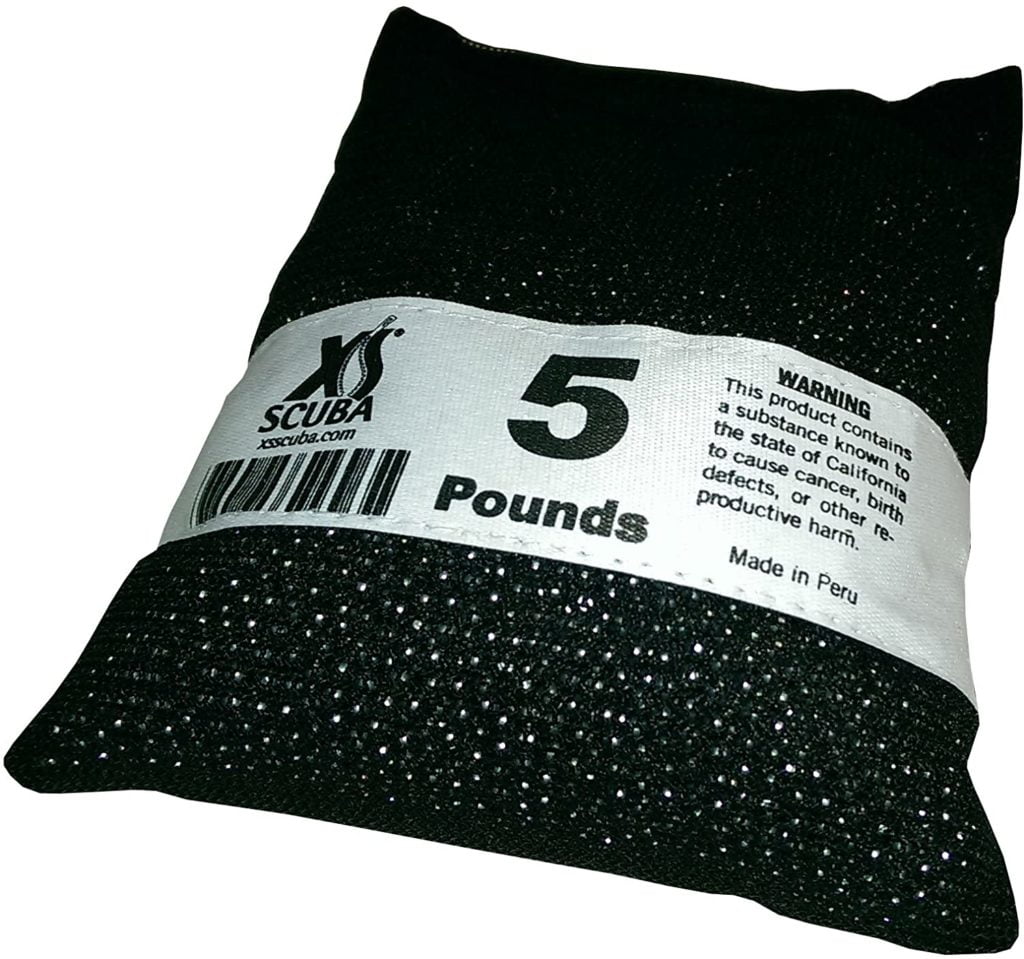
The XS Scuba Lead Shot weight is perfect for those wanting comfortable, soft dive weights. The weight forms to the shape of your body, making for greater comfort for those who find the hard edges of regular weights uncomfortable. These weights are also great for pool training dives, as dropping them will not damage the tiling of the pool. On top of this, these weights are quick drying, making them convenient for the travelling diver.
Features
- Form comfortably to body shape.
- Larger with less surface area.
- Hardened with antimony.
- Heavy-Duty nylon mesh bags.
- Quick draining and drying.
- Available from 1-5 lbs.
#2 – Sea Pearls Vinyl Coated Lace Through Lead Weights
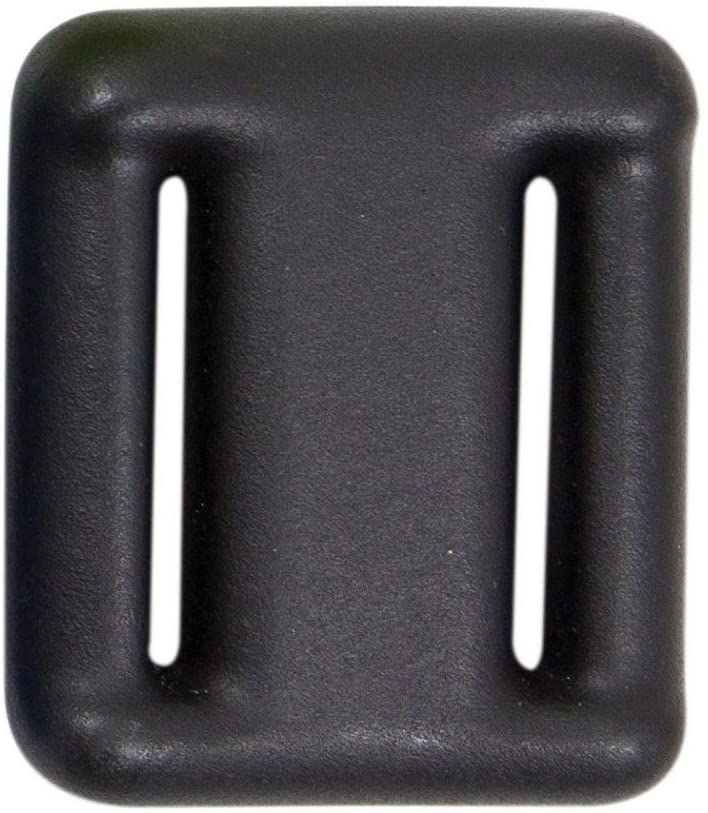
Sea Pearls vinyl coated weights are great for those looking for a more traditional weight but without the drawbacks of hard metal edges. Coated in matte vinyl with curved edges, these weights prevent damaging surfaces, such as pool tiles or boat flooring. They are also less abrasive when in contact with your exposure suit (if using a weight belt), making them ideal for drysuit divers (for whom suit integrity is crucial).
Features
- Coated in matte vinyl.
- Scratch resistant.
- Curved edges and matte finish prevent damaging pool and boat surfaces.
- Easy to lace a weight belt through.
#3 – Sea Pearls Uncoated Lace Thru Weights
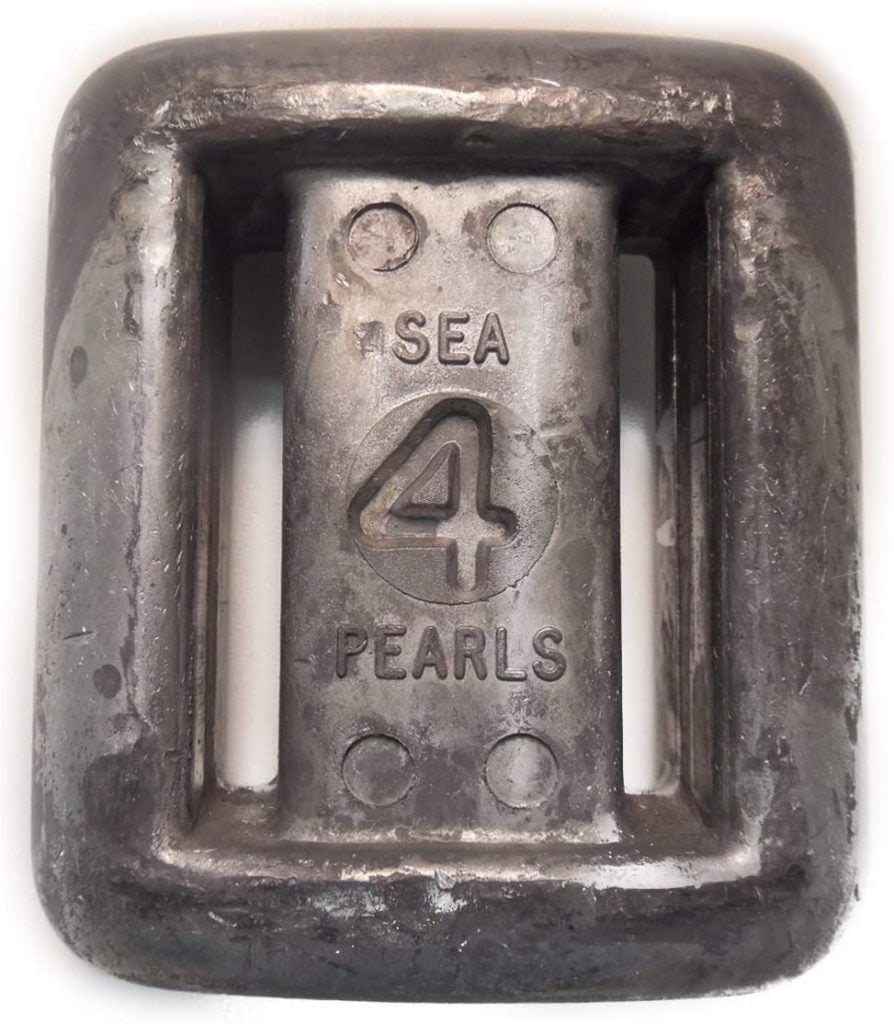
For those wanting a no nonsense weight, Sea Pearls Uncoated Lace Thru weights are the perfect choice. They are simply designed, with contouring and rounding for comfort and for reducing abrasiveness. They are also hardened with antimony to prevent deforming with continual use. These weights are available in 1-12lbs.
Features
- Rounded and contoured for comfort.
- Hardened with antimony to prevent deforming.
- Available from 1-12 lbs.
#4 – Dive Rite Travel Velcro Weight Pockets
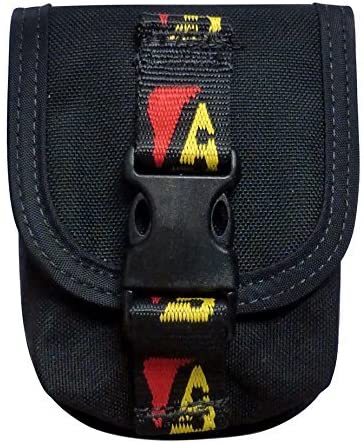
Dive Rite’s Travel Velcro weight pockets are an excellent choice for those wanting to fine tune their weight system. These versatile pockets can be slid over 2” webbing, be it on the harness or the tank bands. The pockets are composed of 1680 denier ballistic nylon; a tear and abrasion resistant fabric. With a quick release buckle, these pockets are very simple and easy to load and unload with weight.
Features
- 1680 denier ballistic nylon fabric is tear and abrasion resistant.
- Two-inch (50.8 mm) nylon webbing loop on the back of the pocket slide over a 2-inch webbing waist strap and secure the pocket into place.
- Acetyl quick buckle is used to easily secure the pocket in the holster.
- Great for trim weights and fine tuning your configuration.
#5 – Scubapro X-Tek Counter Weight Pockets
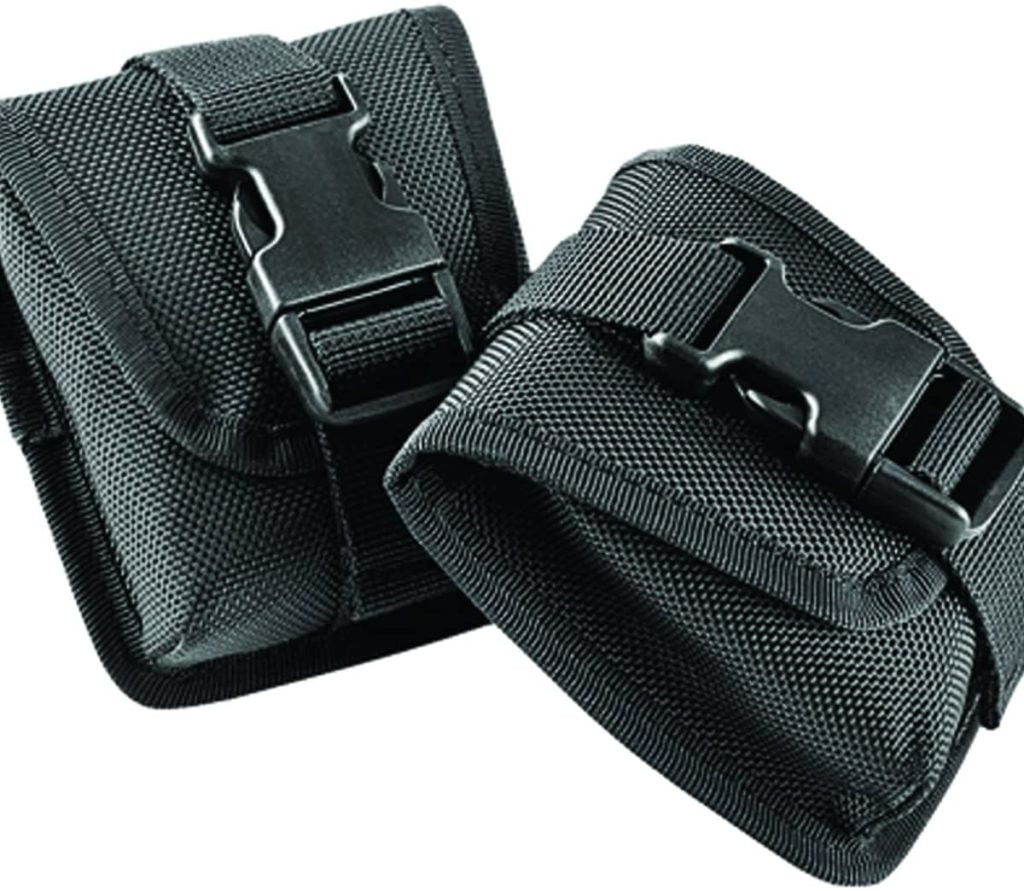
Scubapro’s X-Tek counter weight pockets are another excellent choice for fine tuning your trim. These weight pockets can be mounted to any part of your BCD, allowing you to find the best position. This will optimise the ease of holding good trim. Each pocket can accommodate a maximum of 1kg of weight.
Features
- Pockets can be mounted on your waist band or tank band.
- Enables you to distribute your ballast weight for optimum balance and in-water stability.
- Sold in pairs, each pocket comes with secure squeeze buckle closures.
- Each pocket can accommodate 2.2lbs/1kg of ballast weight.
#6 – Cressi Weight Belt
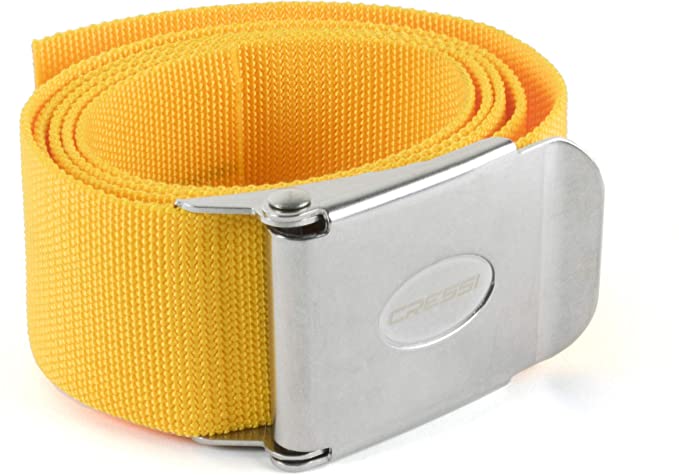
Cressi’s standard weight belt is a great choice for those who prefer to stick with a traditional belt system for weighting. It’s composed of strong, woven nylon and comes with a sturdy stainless steel buckle for maximum fastening security. Despite the buckle being strong, the belt can be opened easily with a short and sharp pull to allow for quick-release.
Features
- Strong woven nylon weight belt with stainless steel buckle.
- The quick-release stainless steel buckle provides an instinctive and rapid emergency release.
- The buckle pin is very strong and is riveted at both ends.
Buyer Guide
Should I Buy My Own Weights?
When it comes to buying diving equipment, weights tend not to be first on the list. And there’s good reason for this; they are inconvenient to travel with, and almost every dive centre in the world stocks weights for their customers. Therefore, for the majority of divers, it will not be necessary to buy weights. However, this is not true for all divers. Perhaps you find standard, hard-edged diving weights particularly uncomfortable; perhaps you want to use specifically non-abrasive weights with your delicate trilaminate drysuit. Whatever the reason, weights may sometimes be a necessary purchase.
Similarly, the type of weight system you use is crucial in improving your trim and positioning in the water. This applies to all divers. Depending on your body mass, BCD, fins, finning technique, and a multitude of other factors, finding the correct weight system for your specific setup will go a long way in making you a more comfortable and safe diver.
Weight Belt or Weight Pockets?
Whether you choose to dive with a weight belt or weight pockets is largely a matter of personal preference.
A weight belt works by threading each weight through the belt and then wearing it around your waist. To remove, you simply give a sharp tug on the excess belt to open the buckle. This is a traditional design, used and liked by many divers.
However, one of the drawbacks of weight belts is that they can be uncomfortable. For those with low body mass, the edges of the weights tend to rub against their hip bones, causing discomfort. Similarly, the weights can be very abrasive against exposure suits, causing thin neoprene wetsuits to quickly wear and light trilaminate drysuits to leak. Another problem of weight belts – although arguably due to user error – is that they are easy to lose underwater if the buckle is not fully secured. If you close the buckle and – unknowingly to you – it isn’t fully secure, then it may become undone at depth causing the whole belt to slide off you. This will result in an uncontrolled rapid ascent, putting you at risk of pulmonary overinflation syndrome and decompression sickness. That said, however, this is an extreme example, and many divers use weight belts with no incidents.
Weight pockets, on the other hand, are an increasingly popular choice. They afford greater comfort, streamlining, and – arguably – safety. They also come with a secure locking system and quick release mechanism.
Trim Pockets
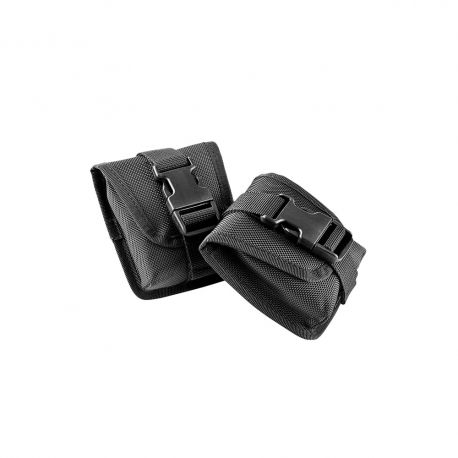
Trim pockets, as the name suggests, are designed to fine tune your trim. They can be affixed to the tank bands when diving in backmount, in order to keep the weights close to your centre of gravity. Similarly, when diving with a backplate and harness, they can be attached to the webbing, on either the waist or shoulder straps. Before investing in a set of trim pockets, it is best to first perform an in-water trim check.
IN-WATER TRIM CHECK
- Establish neutral buoyancy and get into a horizontal position.
- Extend both your arms and leg so that your whole body is almost perfectly horizontal in the water column.
- Then, simply relax in this position, releasing bodily tension, and allow your body to move in the direction it naturally moves in.
By performing this simple in-water check, you can determine where you need to place weight in order to achieve perfect trim. For example, if your legs sink when you release bodily tension, putting you in a head up position, then you will need to place trim weight further towards the top of the tank/the shoulder area. Equally, if you roll to one side, then there is a discrepancy in lateral weight, meaning you need to add/remove weight from one side of yourself. With the addition of trim weights, these discrepancies and imbalances can be eliminated, allowing you to perfect your trim.